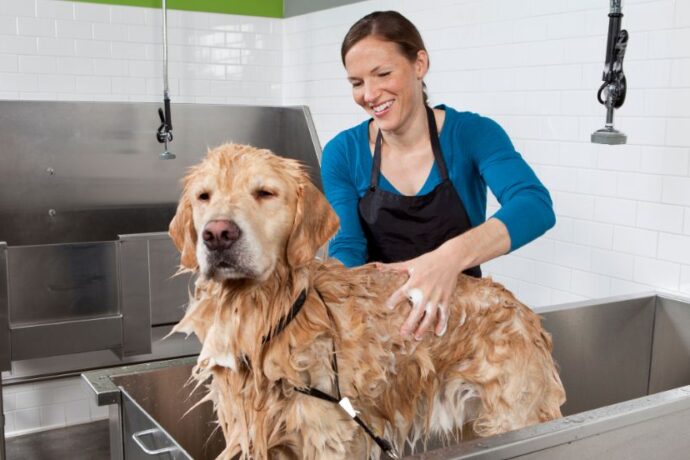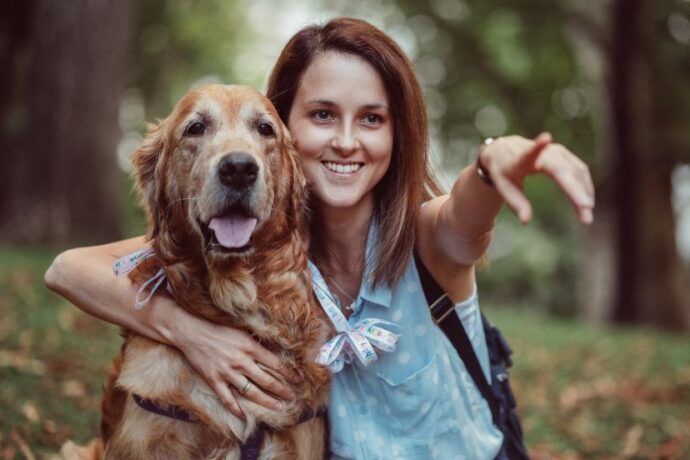If you’ve ever had a bad day and suddenly found your dog resting its head on your lap, you’re not imagining things. Dogs have an uncanny ability to sense human emotions—especially sadness. Their comforting nuzzles and quiet companionship seem perfectly timed, almost as if they truly understand how you feel. But how do they do it? Let’s explore the fascinating blend of science, instinct, and empathy that makes dogs such remarkable emotional companions.
Can Dogs Really Tell When You’re Sad?
Yes, they can—and not just through your tone or expressions. Dogs are deeply attuned to human behavior, picking up on subtle cues such as changes in body language, scent, and vocal tone. Studies have shown that dogs can recognize emotional shifts in their owners and often respond with comforting behaviors (1). Their sensitivity isn’t coincidental; it’s the result of thousands of years of domestication and close living alongside humans.
For instance, research from the University of Lincoln found that dogs can integrate visual and auditory emotional cues, allowing them to interpret complex human emotions accurately (2). This means your dog isn’t just reacting to your crying—they’re actually recognizing your sadness.
7 Incredible Ways Dogs Sense Your Mood
Dogs are emotional barometers — tuned into the tiniest shifts in your behavior, voice, and even body chemistry. Their sensitivity isn’t magic; it’s a result of evolution, bonding, and a unique interspecies understanding that few animals share with humans. Here’s a deeper look at the fascinating ways your dog knows exactly how you feel.
1. They Read Your Facial Expressions Like a Book
Dogs are masters of human expression. Over centuries of living alongside us, they’ve learned to interpret the subtleties in our faces — from a gentle smile to a downturned mouth. A 2016 Biology Letters study found that dogs can tell the difference between happy and angry human faces, and they adjust their reactions accordingly (3).
If you come home after a tough day, your dog doesn’t just see your tired eyes — they interpret your drooping posture, frown lines, and slower movements as signs of sadness or stress. You might even notice your dog tilting their head or gazing at you intently; that’s their way of reading your emotional state and deciding how to respond.
2. They Hear What You’re Feeling in Your Voice
Dogs don’t need words to understand meaning — tone alone says enough. Their hearing range is far superior to ours, but it’s not just the pitch that matters. They pick up emotional cues embedded in how we speak.
A study published in Current Biology revealed that dogs’ brains process emotional tones in human voices in a similar way to humans (4). When you speak softly or cry, your dog detects the vulnerability in your tone and instinctively lowers their energy level, often coming closer to offer quiet companionship. Conversely, a cheerful or excited voice sparks joy and playfulness in them.
Your dog, in essence, “hears” your emotions before you’ve even consciously expressed them.
3. They Smell Emotional Changes in Your Body Chemistry
Perhaps the most powerful — and least visible — way dogs sense your emotions is through smell. A dog’s nose contains up to 300 million scent receptors (compared to our mere 6 million), and they can detect changes in body odor caused by hormonal shifts.
When you’re stressed or sad, your body releases hormones like cortisol and adrenaline, subtly altering your scent. Studies, including one from Queen’s University Belfast, have confirmed that dogs can smell human emotions such as fear or stress through perspiration and breath samples (5).
So when your dog sniffs you closely after you’ve had a bad day, it’s not just curiosity — they’re literally detecting the biochemical signs of your emotional state.
4. They Notice Every Shift in Your Body Language
Before you even say a word, your dog already knows how you’re feeling based on how you move. Dogs are visual observers — they pick up on posture, gait, and gestures. A slight slump, slower walking pace, or hanging head can signal distress.
This keen observation ability is what makes dogs incredible therapy and service animals. They can sense when someone’s anxious, tense, or having a panic attack — and respond by nudging, pawing, or staying close to provide comfort.
Your dog’s ability to “read” your physical state is not learned from a book — it’s pure, intuitive empathy born from countless shared moments.
5. They Mirror Your Emotions Like a True Empath
If you’re feeling anxious, you might notice your dog pacing or acting uneasy. When you’re calm, they tend to relax. This isn’t a coincidence — it’s emotional mirroring, a behavior known as emotional contagion.
Dogs often sync their emotional states with their humans. Research from the University of Vienna found that dogs can reflect their owner’s stress levels based on shared cortisol patterns (6). This means that prolonged stress in owners can actually make dogs feel more anxious, too.
This mutual empathy strengthens your bond but also reminds us that dogs are emotionally porous — they feel what we feel, deeply and sincerely.
6. They Remember How You Felt Before
Dogs don’t just sense emotions in the moment — they remember them. If you’ve been upset before and your dog comforted you by cuddling or resting nearby, they associate that behavior with making you feel better. So, the next time they notice similar emotional cues, they’ll repeat those comforting actions.
This kind of learned empathy shows how dogs build emotional intelligence over time. Their responses become tailored to you — almost as if they’ve developed a personal “emotional map” of their favorite human.
7. They Detect Emotional Changes Through Routine and Energy
Dogs thrive on routine and consistency. When your mood changes, so does your daily rhythm — and dogs pick up on it immediately. Maybe you’re quieter than usual, skipping your walk, or eating dinner later than normal. These small deviations are big signals to your dog that something’s off.
Many pet owners report that their dogs become more clingy, protective, or watchful when they’re going through a tough period. That’s because dogs sense energetic shifts — your lowered enthusiasm, your slower pace, your silence. Their reaction? To close the emotional distance and simply be there.
It’s one of the purest expressions of unconditional love — silent companionship in your moments of sadness.
FAQ’s Frequently Asked Quetions
1. Do dogs understand why you’re sad?
A. While dogs may not understand the exact reason behind your emotions, they can sense the change in your energy, voice, and behavior—and they respond with comforting actions.
2. Why do dogs cuddle you when you cry?
A. Cuddling is their way of offering support and reassurance. Physical contact releases oxytocin—the “love hormone”—in both you and your dog, strengthening your bond and soothing distress.
3. Can dogs get sad when their owners are upset?
A. Yes. Dogs often mirror their owners’ emotions. If you’re anxious or depressed, your dog might appear withdrawn or less playful, reflecting your mood through empathy.
Conclusion:
Dogs aren’t just loyal companions—they’re emotional guardians. Their ability to sense sadness, fear, or joy is a result of millennia of human-canine coevolution. When your dog curls up beside you during tough times, it’s not just instinct—it’s empathy in its purest form. So the next time you’re feeling low and your furry friend refuses to leave your side, remember: they may not have words, but they understand your heart better than most humans ever could.
References:
1. Do Dogs Know When You’re Sad
2. A man’s best friend: study shows dogs
3. Dogs can discriminate emotional expressions of human faces
4. Voice-sensitive regions in the dog and human brain are revealed by comparative fMRI
5. Stress has an odour and dogs can smell it – new research
6. Oxytocin and Cortisol Levels in Dog Owners and Their Dogs











